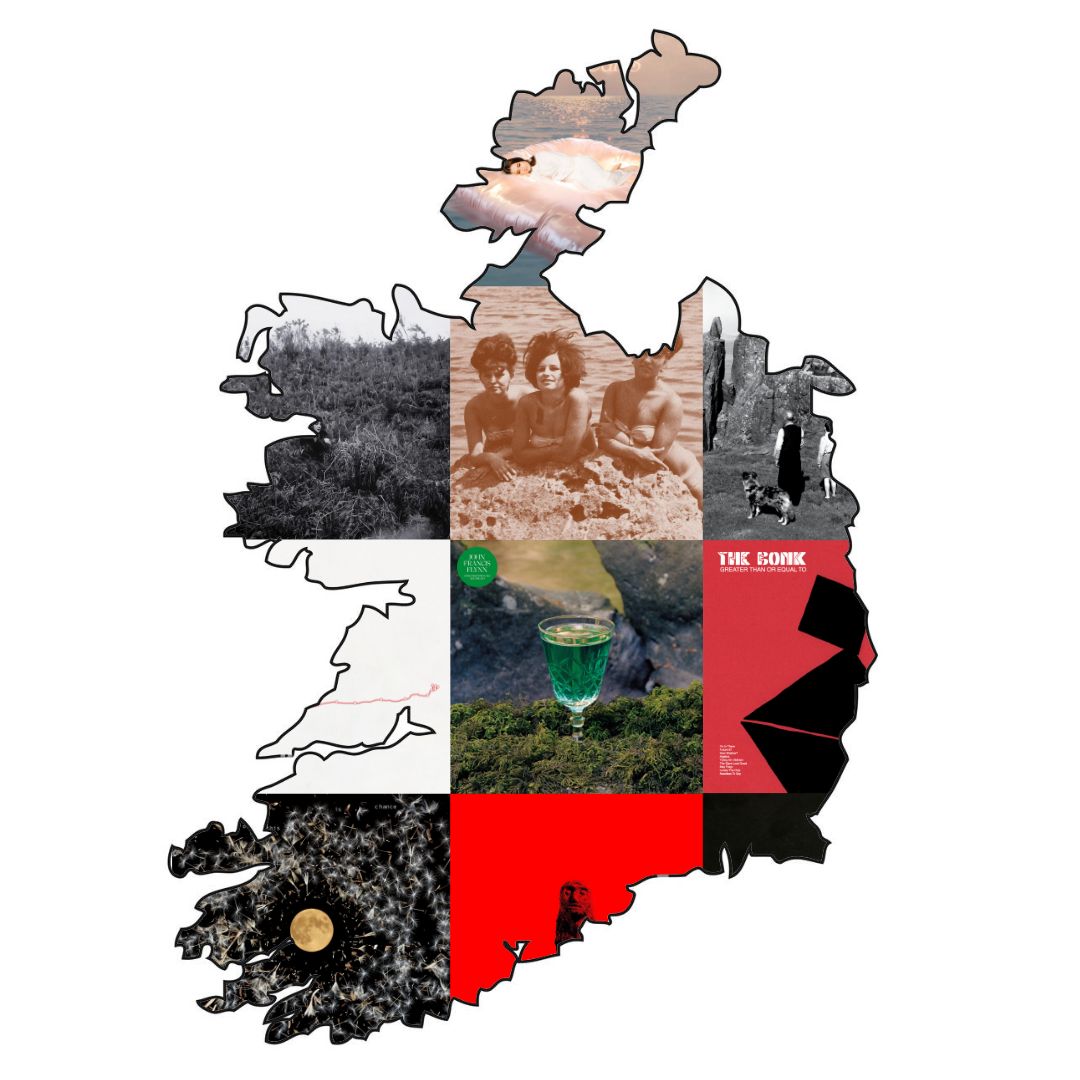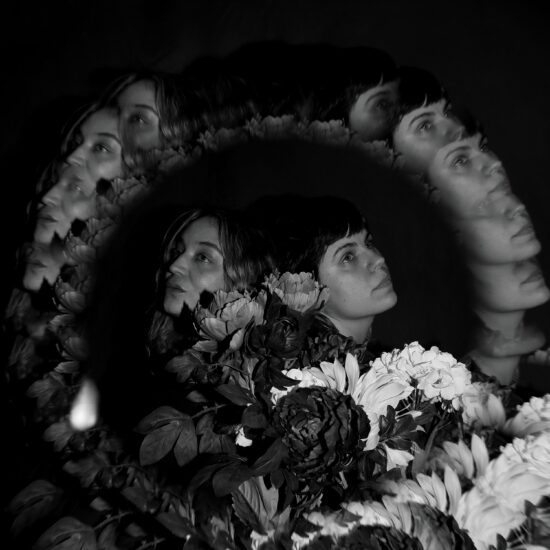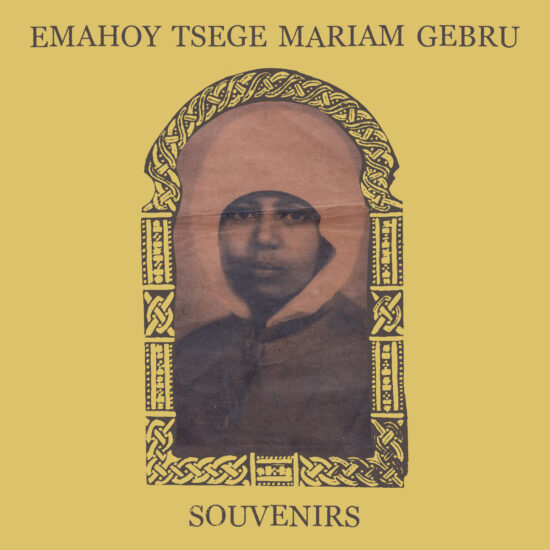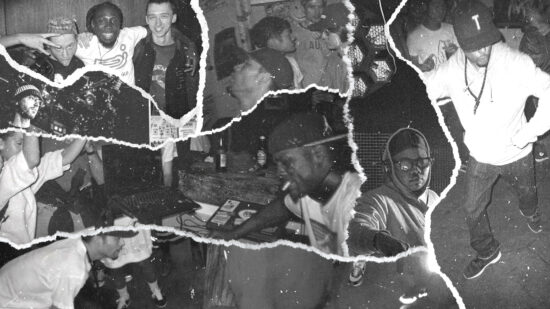Different ways of seeing folk – from instruments, lyrics, or psycho-geographical mythologies immersed in the local context – catch me the most in this year’s Irish music scene. Join me for the ten most exciting records from the last year.
2023 is marked by the album False Lankum (which I wrote about on Radio Folk Culture Centre) by the Dublin-based quartet. It’s also a doorway to a deeper focus on the contemporary Irish music scene. Lankum takes inspiration from traditional music (and lyrics or themes), melts it with the heavy sound, and dives it into a trance close to the way Swans or Earth does. But that’s just the tip of the iceberg – there are quite a few bands in Ireland who are looking at the tradition, which they are appealingly translating into the contemporary language of music.
I focus on scenes (France, Russia), artists (Patrick Shiroishi), or labels (Astral Spirits, Tripticks Tapes) from time to time. In October, Lankum compiled The Planet That You’re On, which was included in Uncut magazine, broadening the view on the contemporary Irish scene. Artists from there treat in different ways what they understand as folk, tradition, the characteristic sounds of the instruments, singing songs, creating electronic or psycho-geographical mythologies, immersed in the local context. Whether the starting point is instruments like a concertina, hurdy-gurdy, synthesizers, or jazz improvisations.
An unpleasant conclusion to this research is the passing of Shane MacGowan, founder of The Pogues, at the end of November. But here is also the strength of the Irish scene, as you can find a reinterpretation of his songs by one of the artists below. Find them between ten the most interesting – apart from Lankum, of course – albums released in the last twelve months.
ELAINE MALONE – Pyrrhic, Pizza Pizza
Elaine Malone has been a long-standing contributor to Cork’s experimental music scene, playing in bands such as folk Mantua, punk Land, and experimental Pot Pot. On Pyrrhic Malone, she combines psychedelic sounds with lyrical melodies and draws with vocals that remind me of something between Nico and Sinead O’Connor. The multi-instrumentalist neatly blends her inspiration from the guitar music of the 90s era – there are elements of shoegaze, grunge, or post-rock, but at the same time, I don’t get the feeling of dusting off the oldies. Malone creates music that is bursting with emotion, dense at times amidst the build-up of walls of sound and percussive cascades, occasionally brilliantly punctuated by harmonium or bass clarinet. Her magnificent voice has to shine through, but the vocalist does so with an unheard-of swagger amidst instrumental polyphony and reverberations that jiggle between emotional heaviness and melodic lightness.
NATALIA BEYLIS – Mermaids, Touch Sensitive
Like Annie Ernaux, Natalia Beylis reaches into the depths of memory, recalling facts and events through field recordings, traveling, and constructing sound landscapes that link time, place, and memory grids. The inspiration for Mermaids came from an old photograph of her mother sitting on the beach with some friends. She started with a sonic haze full of field recordings and sound generated on a CRB Elettronica Ancona Diamond 708 E – an instrument with a genuinely aquatic sound, a little immersed in the aesthetics of kosmiche musik, a little in Eno playfulness with ambient, and a little in the samplodelia of Philip Jeck or The Caretaker. So much so that Beylis paints motifs, snippets of sound that she repeats in a slightly altered form; sometimes, the synth is more pronounced, and at other times, it shifts from a bright to a darker tone. The result is an unusual impression in which the melody fades – the ambient clouds are like a scattered memory and a hazy, dreamlike mood hovers over everything.
JOHN FRANCIS FLYNN – Look Over the Wall, See the Sky, River Lea
John Francis Flynn has drawn on different Irish songs to which he is given his unique character. He shows their timelessness and the graceful potential of folk to gain in a new light, sounding sometimes overpowering, sometimes moving. Above all, however, he is a genius at sometimes playing minimalist to maximalist effect. ‘Zoological Gardens,’ sung by The Dubliners, among others, resounds here against a backdrop of silence and a synth line. ‘Mole In The Ground’ trancey chases in verbal repetitions, ‘Kitty’ (alongside ‘Dirty Old Town,’ a fantastic reinterpretation of The Pogues) captivates with its emptiness and thickening atmosphere, whereas ‘Willie Crotty’ is broken and dirty with an electronic casio and effects part, and ‘Within a Mile in Dublin’ neatly turns towards folk. It’s a unique album, full of brilliant tangling that combines multiple aesthetics, highlighting the potential of Irish songwriting on the one hand and Flynn’s compositional sense on the other.
RACHAEL LAVELLE – Big Dreams, self-release
Although Rachael Lavelle stands apart from the other artists described here (using very much electronic sound), she uniquely builds her mythology. On the one hand, with her colorful synth passages and subtly created beats, and on the other, with her extraordinary vocal abilities, reminiscent of Poliça or Julia Holter. This dark psychedelia has its surreal aftertaste – ‘Let Me Unlock Your Full Potential’ is at one point punctuated by a quasi-coach speech to herself, an attempt to awaken to another reality. But it’s not disco – in ‘Travel Size,’ strings, clarinet, or sax emerge; in ‘Eat Clean,’ brassy swirls occur on a trancey, delirious beat like a mangle. Another layer of meaning is added by the voice of Doireann Ní Bhriain, known for her announcements on Dublin trams. Lavelle is like a modern-day Leopold Bloom but more in the style of Dorothy from the Land of Oz in a world where he blurs the line between reality and fantasy.
LISA O’NEILL – All of this is Chance, Rough Trade
Lisa O’Neill’s vital goals already set a clear direction in the first track when she quotes lyrics from ‘The Great Hunger’, a 1942 poem by Patrick Kavanagh, whose work was firmly rooted in regional Irish culture and tradition. The singer wades through poetic lyrics laced with a kind of sad, suspended melancholy – after all, in the track above, the words ‘I am frightened of dying… I am frightened of living’ fall. The meditations are underpinned by varied instrumentation, making the sonic palette of this album appealing. The drone arrangements of fiddler Colm Mac Con Iomaire do their job here, culminating in the title track, a Tony McMahon-inspired piece with a touching, subtle mini orchestration in the background. However, there is no room for glamour here, but rather an intuitive weaving of contemporary storytelling in the form of personal, gentle lullabies, reflecting on the world around, transience, and death.
JONNY DILLON – A New Directive From The Bureau of Compulsory Entertainment, All City
Acoustic playing stands at the opposite pole of the dance floor electronica, a world Jonny Dillon navigated as Automatic Tasty. But in 2019’s Songs For A One-String Guitar, he showed how to effectively change these perspectives and move into tender and delicate music based almost exclusively on the acoustic guitar’s sound. Four years later, he returns with another album, on which he draws his vision of folk music with touches of blues with a primitive tinge (he also hosts the ‘Fragments of Folklore’ podcast). One marvels at his way of developing his compositions – endless, vibrant songs in which the guitar resonates mesmerizingly. Dillon brilliantly builds the storytelling of these trance-like tracks, which have an unwritten infinity, ephemerality, and melancholy. He plays decisively but lightly, leading the way through meandering melodies and crisply drawn themes on the border of blues and folk, relying on delicate and alert arrangements.
SLÁN – Slán, Mines Clarence
At first, the minimalism of Seán Redahan’s music seems to have its origins in cold dub techno. Nothing could be further from the truth – the cut-up instrumental parts or sounds are generated behind a self-made resonance box with piezo pickups. Various elements attached to it create a reverberation: rhythmic or drone-like when a string is pulled, generating unusual sound effects. This is folk fragmented – in the sound of the instrumental parts, the slightly funerary aesthetic, the dignified strokes of the strings, all of which combine to create a collage of traditional music sound scraps, here arranged in evocative and coherent bass-drum beats, sometimes in the style of Ben Frost’s recordings. It’s a meticulously contemplated darkness in which murky bass lines are interspersed with tribal rhythms, creating a meditative tale of condensed drama that resonates with an array of ornaments.
OXN – CYRM, Claddagh Records
Radie Peat from Lankum formed OXN with Katie Kim, John ‘Spud’ Murphy’ and Eleanor Myler. Their heavy music has a darkness and solemnity, looking towards traditional music but drawing on a post-rock language with a doom tinge. Once again, original songs and classic compositions are taken to task, including ‘Cruel Other’ from the 18th century, about how women were considered criminals if they had illegitimate children, or ‘The Trees They Do Grow High’, which continues the theme of oppression and social pressure (there is also Scott Walker’s ‘Farmer in the City’). OXN gives them a darkly trance-like feel – once plotting a funeral mood, at other times composing on a krautrock backbone or dragging out a sluggish, Low-style melodic undercurrent. Each time, the songs are long, gradually developing their drama full of darkness and trepidation, transforming the folk lightness into a burden of social and moral heaviness.
TRÁ PHÁIDEN – An 424
A different take on localness is shown by Trá Pháidín, who gives direction to their music by setting it in a particular latitude: the line of a bus that travels along the Galway-Carna route in the west of Ireland, along a series of breathtaking views. There is rushed post-rock in the style of early Tortoise, an ensemble playing along the Kokoroko route; there is choral singing, blues parts, delicate krautrock, prog-rock juggling of themes, frivolous improvisations, but also contemplative wailing with reverb. And if there is any singing, it is only in Gaelic, which adds a unique mystique element to this everyday life music. This an intriguing example of how a light and open form creates an unforgettable epic of the everyday, with a sonic impact on the imagination, in which the drama changes unhurriedly, all the while exploding with the ideas of a well-coordinated collective.
THE BONK – Greater Than Or Equal To The Bonk
The Bonk goes even looser in their treatment of improvisation and the jazz formula (comparing to Trá Pháidín), indulging in and exploring free rock influences, trance, and post-rock forms. Their music emerges from a free-drone haze, which then leads from guitar-driven, oneiric sound, exuberant excitement, delicately painted walls of sound, cosmic sounds, to psychedelia in a way of the early Liars records as in ‘Trying an Oblivion’. The musical conglomerate, a boldly stylistic ensemble in which library music alternates with melodies from the spaghetti western genre, percussive krautrock forms with art-rock experiments, is as invigorating as it is brisk, without falling into a stupor. They juggle styles and moods and look back to the Captain Beefheart oeuvre, wryly lavishly reminiscent of Robert Wyatt songs. It’s a psych-rock troupe that drones on but knows where it’s heading.




